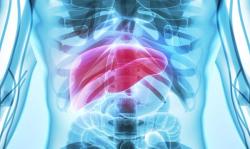
OR WAIT null SECS
Early Antibiotic Treatment Associated With Atopic Dermatitis, Asthma
Further research is needed to understand the mechanism behind the link as antibiotic exposure is often necessary in care.
Neonatal antibiotic therapy for treating confirmed infection is associated with an increased risk of atopic dermatitis (AD) later in childhood, and early antibiotic treatment is associated with AD, asthma and inhaled corticosteroid use.1
“Antibiotics are among the most frequently used medications in children. In the United States, intravenous antibiotics are administered to 2–42% of all neonates and by the age of 2 years, children have on average received nearly three courses of antibiotics. While antibiotics are vitally important, antibiotic exposure in early life may also have detrimental consequences,” lead investigator Santeri Räty, Department of Paediatrics, University of Turku, Finland, and colleagues wrote.1
Räty and colleagues collected data from a cohort of 11,255 children obtained from hospital records and national registers and analyzed the association between early antibiotic exposure and outcomes using logistic regression, accounting for confounding factors.
Overall, 1,255 (11.2%) children were exposed to antibiotics during the first 14 days of life. Around half of these children (n = 592; 5.3% of total) received empirical antibiotic therapy and subsequently had infection ruled out while the remaining children had a median duration of 7 days of antibiotic therapy (interquartile range, 7.7). A total of 1,777 (15.8%) children received antibiotic treatment after the neonatal period but before 6 months of age.1
The investigators found that neonatal antibiotic therapy for confirmed infection was associated with childhood AD (adjusted odds ratio [aOR], 1.49 [95% CI, 1.15–1.94]), while empirical antibiotic treatment was not (aOR, 1.25 [95% CI, 0.94–1.68]). Antibiotic therapy after the neonatal period but before 6 months of age was more common in children developing atopic dermatitis (aOR, 1.38 [95% CI, 1.15–1.64]), asthma (aOR, 1.56 [95% CI, 1.32-1.85]) and inhaled corticosteroid medication use (aOR,1.88 [95% CI, 1.66–2.13]).1
Investigators investigated other potential factors that could be implicated in these outcomes. They found that maximum plasma C-reactive protein concentration during the first week of life was not associated with increased risk of AD, asthma or inhaled corticosteroid use later in childhood.1
“Translational research is needed to elucidate the potential causal mechanisms underlying these associations. It is important to bear in mind that antibiotic therapy is vitally important in the care of sick neonates and infants, but we must be cognizant of its potentially harmful long-term effects. Improved means of accurately identifying neonates and infants who need antibiotic therapy and novel interventions to minimize the risks in exposed children are needed,” Räty and colleagues concluded.1
Other recent research examining associations between infants and development of AD found a link between the presence of transepidermal water loss (TEWL) at the anterior cubital fossa and clinical signs of AD. The investigators found that anterior cubital fossa TEWL values were statistically significant at the 1, 6, and 12-month marks among those with AD versus those without any clinical signs. The investigators concluded that there were statistically significant correlations between the TEWL assessed at the anterior part of newborns’ knees and their hydration rate seen at the anterior cubital fossa by their initial month of life.1
REFERENCES
Räty S, Ollila H, Turta O, et al. Neonatal and early infancy antibiotic exposure is associated with childhood atopic dermatitis, wheeze and asthma. Eur J Pediatr. Published online September 28, 2024. doi:10.1007/s00431-024-05775-1
D’Erme AM, Fidanzi C, Bevilacqua M, et al. Cord Blood Serum Levels of IL-31 and CCL17, Cutaneous Markers, and Development of Atopic Dermatitis. JAMA Dermatol. Published online September 11, 2024. doi:10.1001/jamadermatol.2024.3178.
Related Content:


